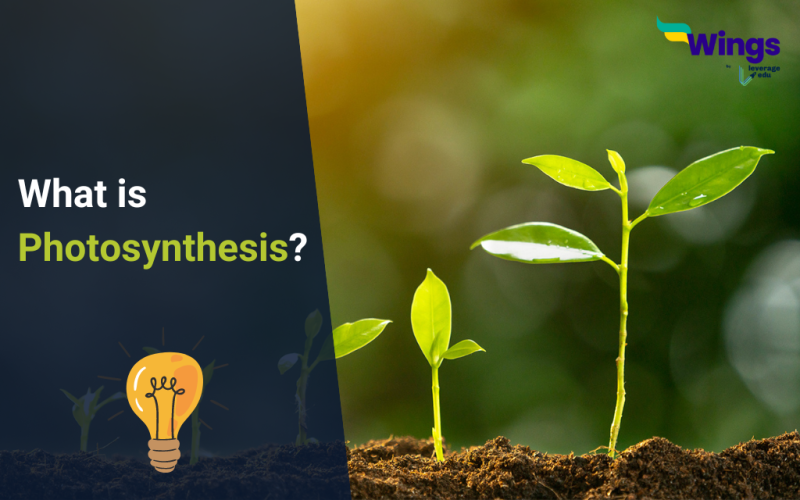Photosynthesis is a process by which plants or trees use water, and carbon dioxide in the presence of sunlight to prepare food for them. An integral part of plants, chlorophyll also takes part to complete the process of food preparation in plants. As a result, plants release fresh oxygen in the environment and store energy in the form of sugar for themself. If you wish to know more about Photosynthesis then read this blog.
Table of Contents
Definition of Photosynthesis
Photosynthesis is a chemical process where chlorophyll and sunlight help plants to prepare food with the reaction of carbon dioxide and water. Apart from green plants of our environment, this chemical process applies to other organisms including prokaryotes and green sulfur bacteria.
Process of Photosynthesis
At the time of photosynthesis, plants take water & other minerals from the soil through their stem and Carbon dioxide (CO2) from the air. In sunlight, water oxidises in plants while the carbon dioxide is reduced to gain more electrons. Here’s a stepwise process of Photosynthesis:
- Absorption of Light: Plants have specialized pigments called chlorophyll located in their chloroplasts, which are responsible for absorbing light energy from the sun.
- Carbon Dioxide Uptake: Plants take in carbon dioxide (CO2) from the air through tiny pores called stomata, primarily located in their leaves.
- Water Uptake: Roots of plants absorb water (H2O) from the soil through their root hairs.
- Light-Dependent Reactions:
a. Photon Absorption: Light energy is absorbed by chlorophyll in the chloroplasts.
b. Water Splitting (Photolysis): This energy is used to split water molecules into oxygen (O2), electrons (e-), and protons (H+).
c. Formation of ATP and NADPH: The energy from the electrons is used to create adenosine triphosphate (ATP) and nicotinamide adenine dinucleotide phosphate (NADPH), which are energy-rich molecules. - Calvin Cycle (Light-Independent Reactions):
a. Carbon Fixation: CO2 is incorporated into a 5-carbon sugar molecule, ribulose bisphosphate (RuBP), with the help of an enzyme called RuBisCO.
b. Reduction and Sugar Formation: ATP and NADPH generated in the light-dependent reactions provide energy to convert the resulting molecules into glucose and other sugars.
c. Regeneration of RuBP: The remaining molecules are recycled to regenerate RuBP, ensuring the cycle can continue. - Glucose Production: The final product of photosynthesis is glucose (C6H12O6), a carbohydrate that stores energy.
- Release of Oxygen: The oxygen produced during the water-splitting step is released into the atmosphere as a byproduct.

Chemical Equation
When atoms of Carbon Dioxide react with atoms of Water in the presence of Sunlight and Chlorophyll then atoms of oxygen and sugar form. This chemical formula of the Photosynthesis process is as follows.

Importance of Photosynthesis
Below, we have mentioned the importance of plant food preparation. Do check it out once.
- The oxygen level of the atmosphere depends on the rate of the photosynthesis process.
- A major source of food for animals or humans.
- Converts solar energy into organic matter
Must Read: Why Sky is Blue in Colour?
What is Chlorophyll?
Chlorophyll is a green pigment in plants that gives them their green colour. It also helps plants create their own food through the photosynthesis process. Apart from green plants, other organisms contain different forms of chlorophyll to complete the food preparation process in plants.
Summary
Must Read: What is the SI Unit of Resistance?
For more information, you can discover our blogs in the General Knowledge section! Don’t forget to follow us on Instagram, Facebook, Twitter, and Linkedin.
 One app for all your study abroad needs
One app for all your study abroad needs













